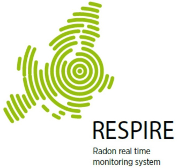Ciampino
Ciampino is located on the southern end of Rome, Lazio, Italy. It became an independent municipality in 1974 and was recognized as a city in 2004 by presidential decree (today the city has about 37 thousand inhabitants). The area is very close to the "G.B. Pastine" International Airport, Rome’s second airport. The city is named after G.G. Ciampini, a religious leader, scientist and archaeologist who lived here in the 17th century. Ciampino lies at the foot of the Colli Albani volcanic complex, the southernmost volcanic complex of the Roman Magmatic Province. The Colli Albani are characterized by a caldera with a central cone and the occurrence of two crater lakes: Albano Lake (water level at 293 m elevation, is 170 m deep) and Nemi (water level at 316 m).
In spite of frequent seismicity (Amato et al. 1994), the Colli Albani are considered an "extinct" volcano, as no future eruptions are expected. Nevertheless, there is uncertainty about the last eruption, since historical documents indicate some kind of eruptive activity as recently as 114 B.C., and the most recent research indicates that there has been eruptive activity during the Holocene (Funiciello et al. 2003). CO2 emissions occur throughout the Ciampino area, especially at the location known as Cava dei Selci. Here 29 cows, 8 sheep, and one person were suffocated by these gas emissions in September 1999. It is believed that the gas release is a result of fracturing caused by the seismicity of 1989-1990 and 1995, and minor seismicity seems to have accompanied the major gas emission event in 1999 (Beaubien et al. 2003).
Due to the occurrence of large CO2 emissions and high radon concentrations affecting its territory, Ciampino has been investigated through repeated soil gas and groundwater surveys (Pizzino et al., 2002; Beaubien et al., 2003) conducted for the local municipality. The main goal of these studies, carried out by researchers from Sapienza University and INGV, both partners in RESPIRE, was to define Natural Gas Hazard (NGH) areas caused by volcanic gas emissions. Moreover, as a component of the NGH assessment, a preliminary indoor-Rn survey was performed at about 30 sites (private houses and schools).
The available dataset consists of soil gas and flux measurements, pCO2 and radon distribution in groundwater, radionuclide content in the soil from different outcropping geological units, and indoor radon measurements in 30 sites (to be increased in the RESPIRE project). The maps of radon activity and pCO2 both in soil gas and groundwater are available.
References
- Amato et al., 1994 Journal of Volcanology and Geothermal Research 61: 225-237.
- Funiciello et al., 2003 Journal of Volcanology and Geothermal Research 123: 43-61.
- Beaubien et al., 2003, Journal of Volcanology and Geothermal Research 123: 63-80
- Pizzino et al., 2002, Natural Hazards, 27: 257-287.






